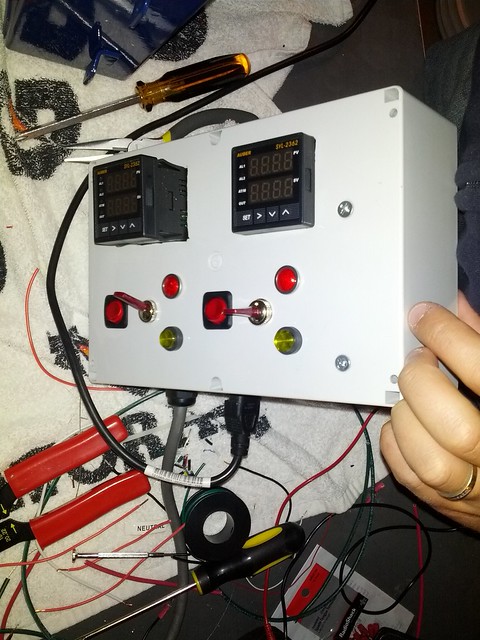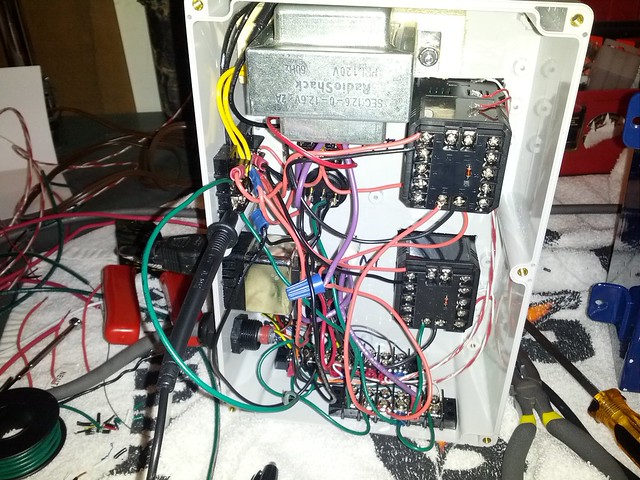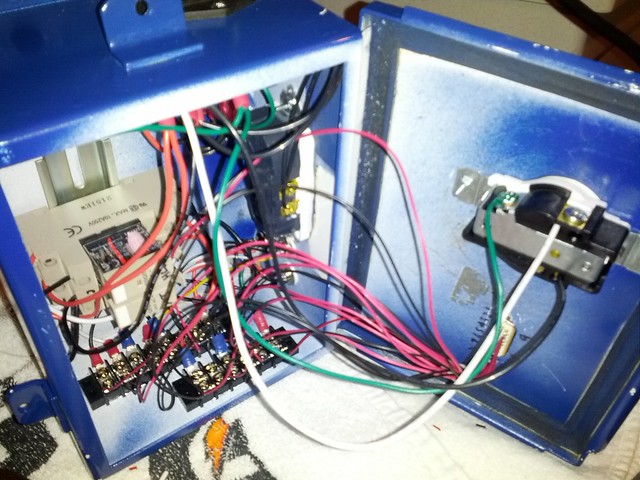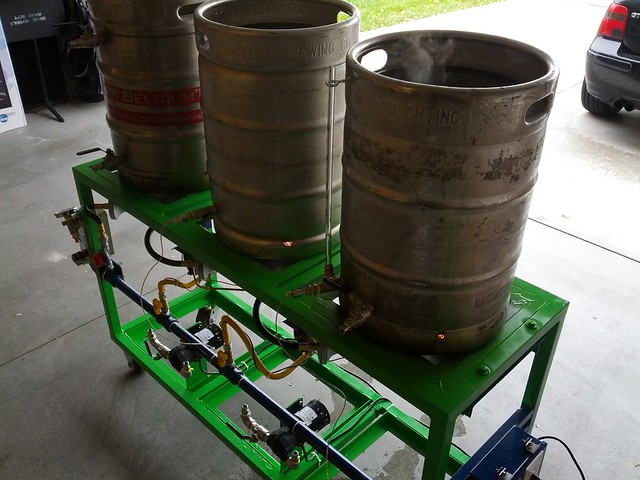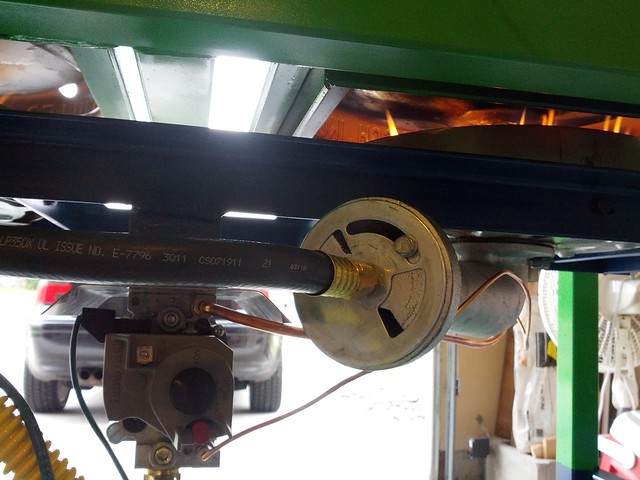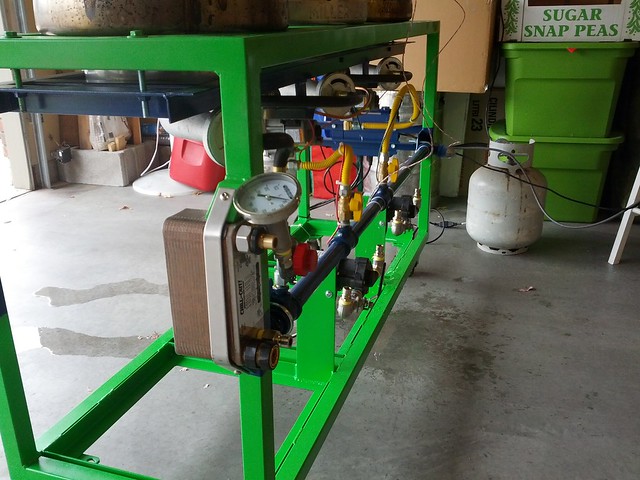midnightbrewing
Active Member
about 18 months ago, a late night searching the forums here led me to this thread: J Landin brutus 10 build and my jaw dropped. This has everything I want!
Months of head scratching, saving, spending and designing followed - and as of a couple days ago I have a fully functioning brutus 10-style brewing rig!
The original forum above is 38 pages of (mostly) terrifically helpful ideas. the non-helpful ideas are my lame question posts which, looking back, I'm like - duh!!! why did I have to ask that!?
Anyway... some pictures and descriptions follow of what I did to make it my own.
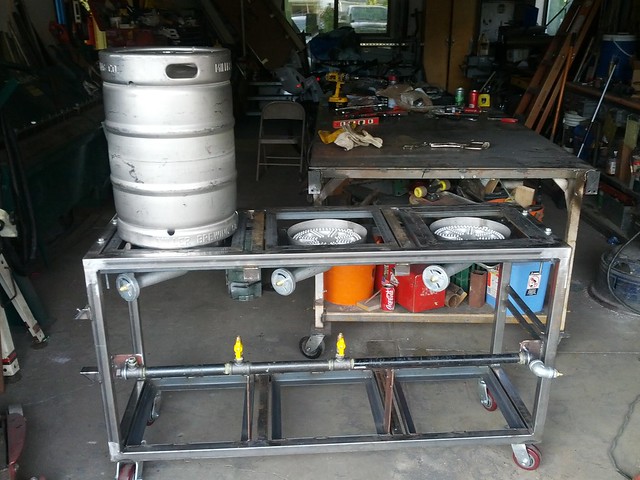
Loved the idea of storing pots under the stand... so the dimensions and direction of the angle iron were with that in mind. 20x30x60
my welding buddy bought some of the stuff new, but we used a lot of scrap he had laying around - and that was a terrific $ saver.
He and I were both comfortable going with 1" gas pipe instead of welding a manifold shut. we welded wings onto the frame, and fit the pipe in with U-bolts. plenty of rectorseal and away we went.
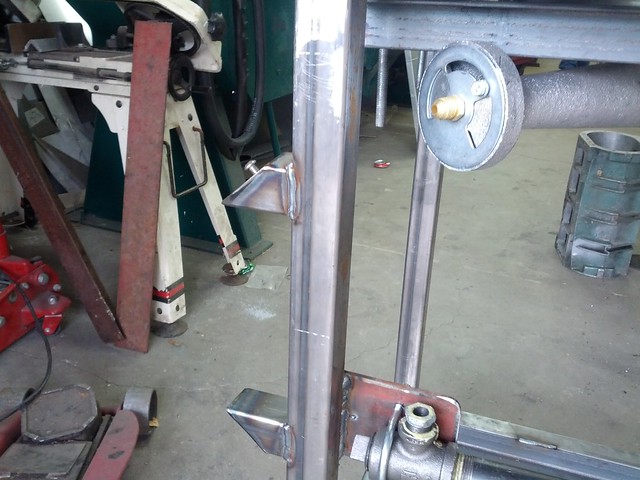
Notice the triangle wings on the outer left of the frame. those come in real handy later. Those are the BG-14 kickass banjos. very affordable from agrisupply, but the wait was over 4 months on backorder. not a problem for me building this sucker 3-4 pieces at a time.
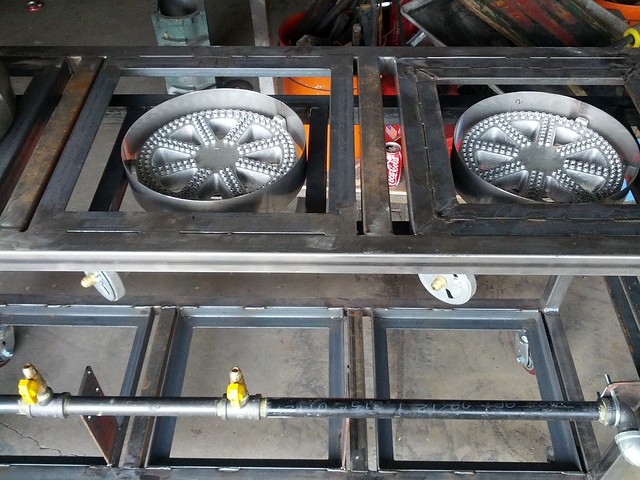
Those are high-pressure, so as others have done I drilled out a larger hole in the oriface. 2.3mm was the size I liked. take it slow. I broke 2 tiny drill bits on 3 burner inlets because I was impatient. If I want to go back to natural gas, I just need to drop $20 or so for some new inlet adapters.
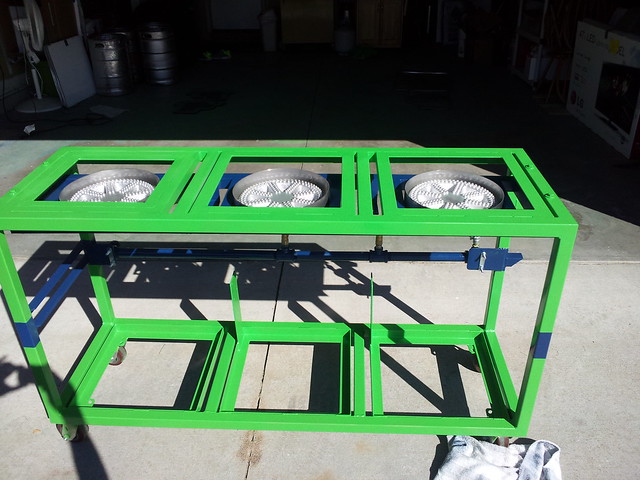
paint job! I used header paint from a local autoparts store. 8 cans in all, 3 primer, 3 green and 2 blue. The paint looked great initially, but scratches easily and discolored quite severely around the burners during the first burn.
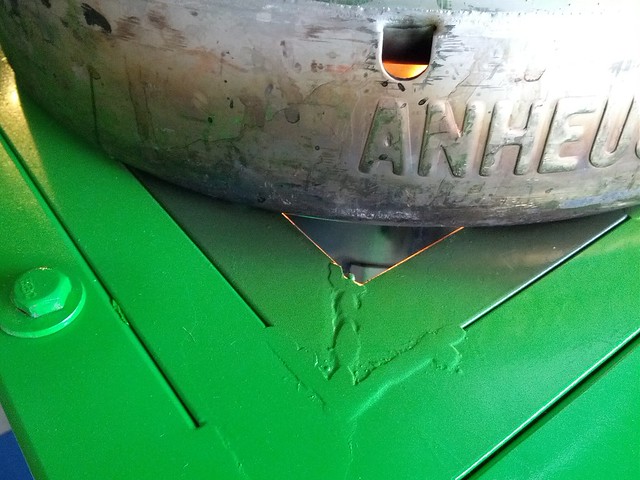
that was after about 20 minutes. it's MUCH darker now. but it's a burner... it is what it is. I might take another shot with a different style paint later but for now I'll be brewing beer not winning beauty contests. If the Seahawks win the super bowl or something... that will probably tip the scales for a touch-up on the paint.
more on the way.
Months of head scratching, saving, spending and designing followed - and as of a couple days ago I have a fully functioning brutus 10-style brewing rig!
The original forum above is 38 pages of (mostly) terrifically helpful ideas. the non-helpful ideas are my lame question posts which, looking back, I'm like - duh!!! why did I have to ask that!?
Anyway... some pictures and descriptions follow of what I did to make it my own.

Loved the idea of storing pots under the stand... so the dimensions and direction of the angle iron were with that in mind. 20x30x60
my welding buddy bought some of the stuff new, but we used a lot of scrap he had laying around - and that was a terrific $ saver.
He and I were both comfortable going with 1" gas pipe instead of welding a manifold shut. we welded wings onto the frame, and fit the pipe in with U-bolts. plenty of rectorseal and away we went.

Notice the triangle wings on the outer left of the frame. those come in real handy later. Those are the BG-14 kickass banjos. very affordable from agrisupply, but the wait was over 4 months on backorder. not a problem for me building this sucker 3-4 pieces at a time.

Those are high-pressure, so as others have done I drilled out a larger hole in the oriface. 2.3mm was the size I liked. take it slow. I broke 2 tiny drill bits on 3 burner inlets because I was impatient. If I want to go back to natural gas, I just need to drop $20 or so for some new inlet adapters.

paint job! I used header paint from a local autoparts store. 8 cans in all, 3 primer, 3 green and 2 blue. The paint looked great initially, but scratches easily and discolored quite severely around the burners during the first burn.

that was after about 20 minutes. it's MUCH darker now. but it's a burner... it is what it is. I might take another shot with a different style paint later but for now I'll be brewing beer not winning beauty contests. If the Seahawks win the super bowl or something... that will probably tip the scales for a touch-up on the paint.
more on the way.


